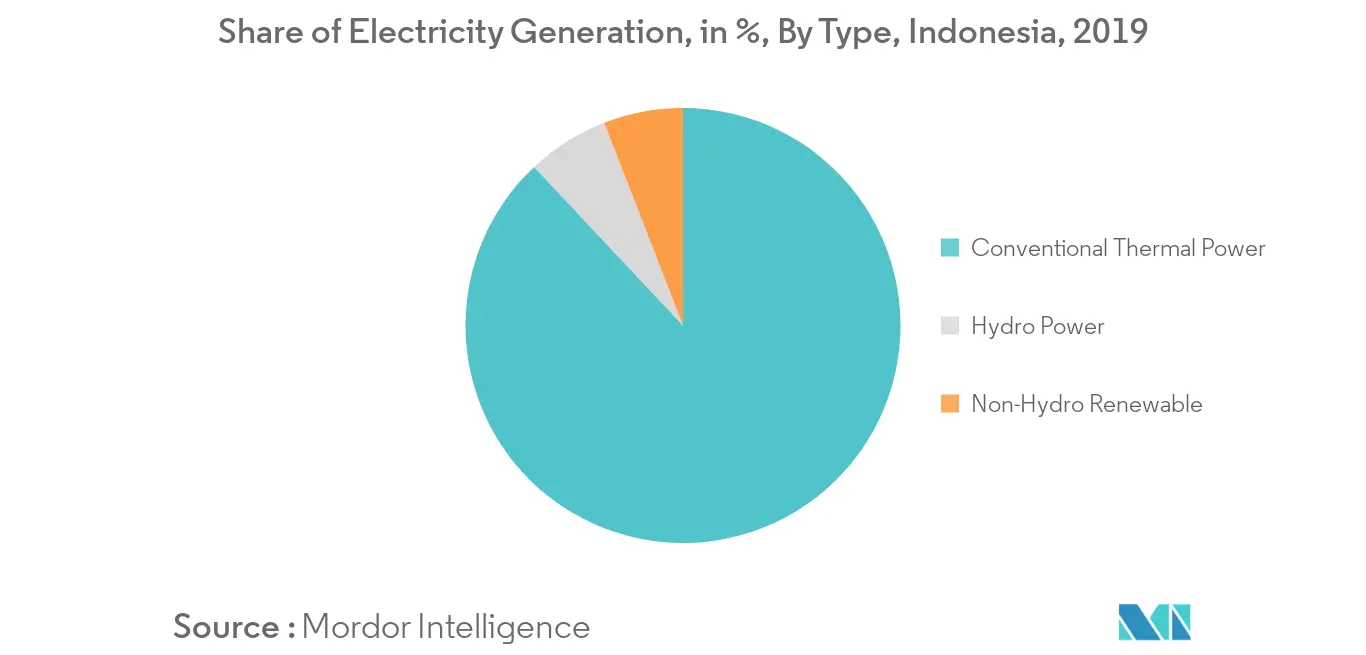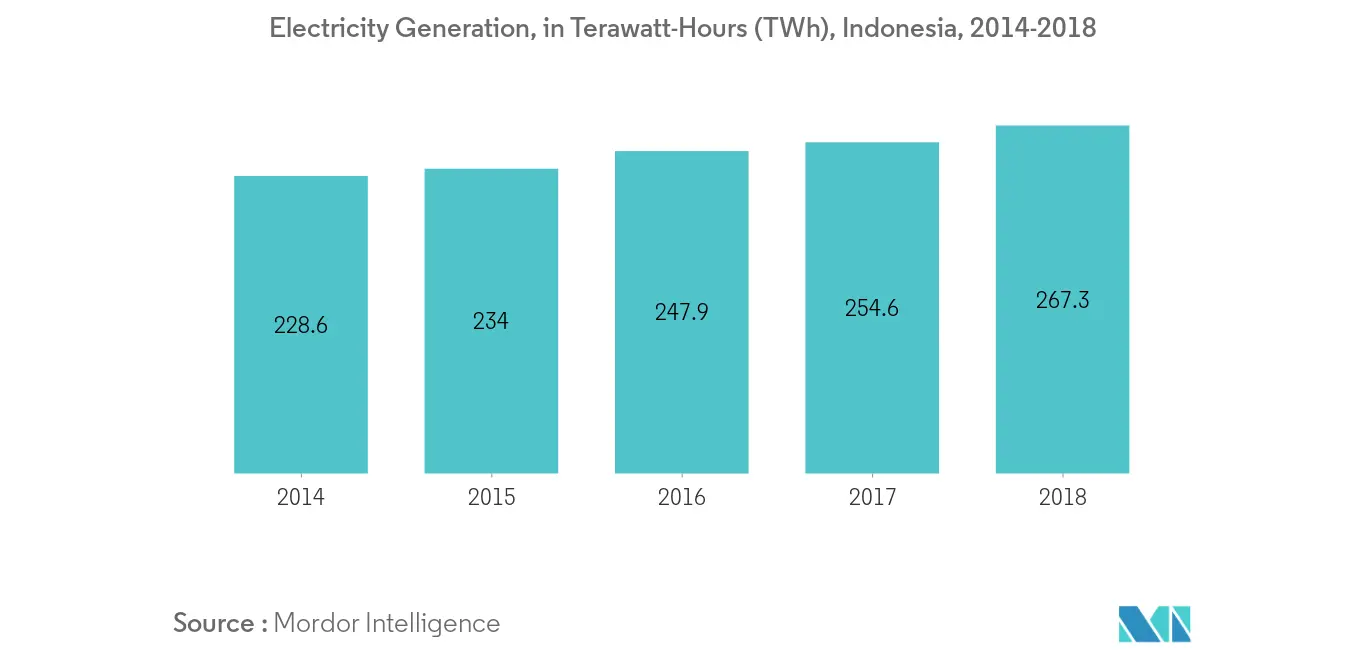Market Trends of Indonesia Power Generation EPC Industry
This section covers the major market trends shaping the Indonesia Power Generation EPC Market according to our research experts:
Conventional Thermal Power to Dominate the Market
- Indonesia is currently the fourth populous country in the world. For several decades Indonesia was a net exporter of oil in the OPEC but due to the constant increase in energy demand and population of the country, it became a net importer of oil. The consumption of coal in the country was also doubled in the last 15 years.
- Conventional Thermal Power is the power that is generated through various sources such as coal, natural gas, and oil. In 2018, approximately more than 85% of the electricity generated in Indonesia was from conventional thermal power.
- Out of the various sources of generating conventional thermal power, the majority of energy came from coal, in 2018. Coal contributed approximately 66% to the conventional thermal power electricity generation, producing 156.4 terawatt-hours (TWh) of electricity, in 2018.
- In 2017, the expansion of the Tanjung Jati B coal-fired power plant started. After completion the plant is expected to have a total installed capacity of 4640 megawatts (MW). The project is being executed by Bhumi Jati Power Company, an independent power producer (IPP), on a build-own-operate-transfer (BOOT) basis. The expansion project is expected to complete by 2021. This clearly show's the country's increasing conventional thermal power in the country.
- Therefore, owing to the above mentioned points, conventional thermal power generation is likely to dominate the Indonesia power generation EPC market during the forecast period.

Increasing Power Demand Expected to Drive the Market
- In 2018, the total electricity generation from the various sources in the power sector in Indonesia was 267.3 terawatt-hours (TWh). Energy sources contributing to the country's energy generation include coal, natural gas, wind, hydro, geothermal, biofuels, and solar energy.
- In 2018, the energy consumption in the country was 185.5 million tons of oil equivalent, which is likely to increase the future. The increasing energy consumption in the future can be compensated by increasing the total installed capacity and power generation. According to the government of Indonesia, the country until 2030 is mainly going to depend on coal energy for the energy supply.
- In 2018, Mitsubishi Hitachi Power Systems, Ltd. (MHPS) completed unit 1 construction of a natural-gas-fired power generation power plant that was built in Indonesia on Java Island within the boundary of the Tanjung Priok Power Plant by PT. PLN (Persero), Indonesia's state owned electricity provider. Under the Jawa-2 Project, PLN planned to construct an 880 megawatts (MW) plant comprising two gas turbines combined cycle power generation systems. This clearly shows the increasing power generation in Indonesia that will come into action by 2021.
- Hence, the increasing power generating capacity to cope up with the future demand surge expected from the country, is likely to drive the Indonesia power generation EPC market during the forecast period.


